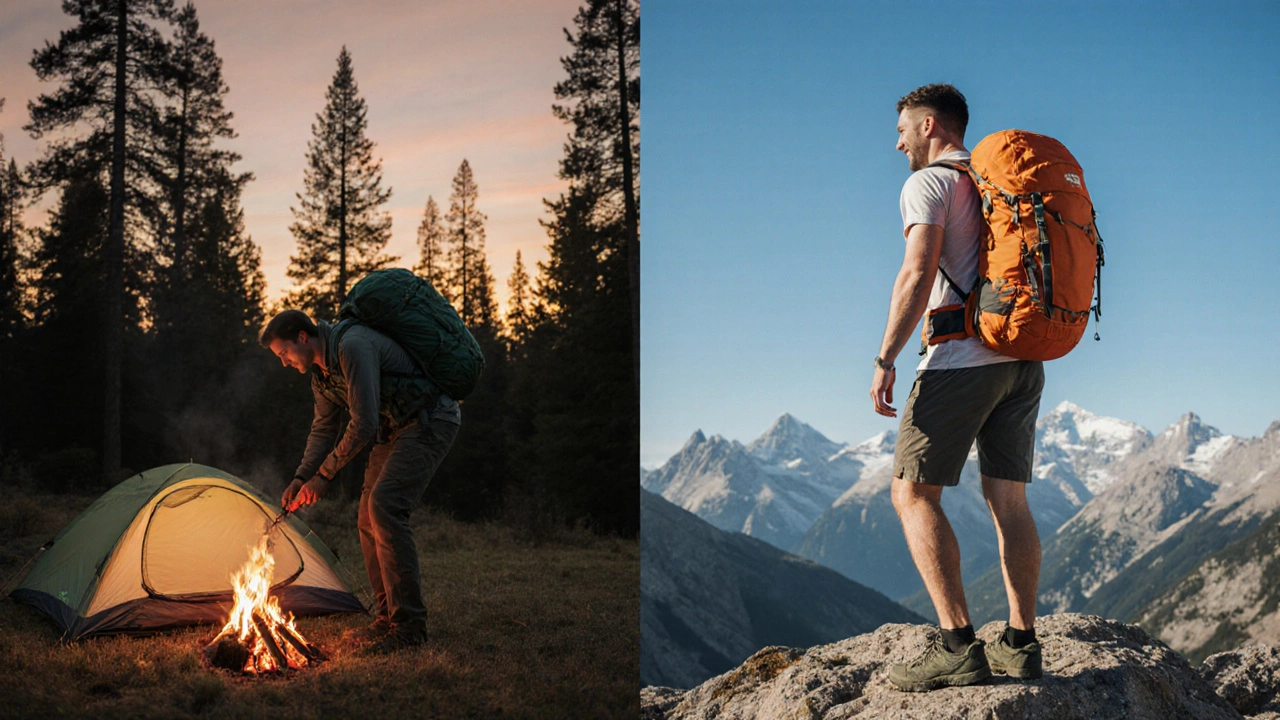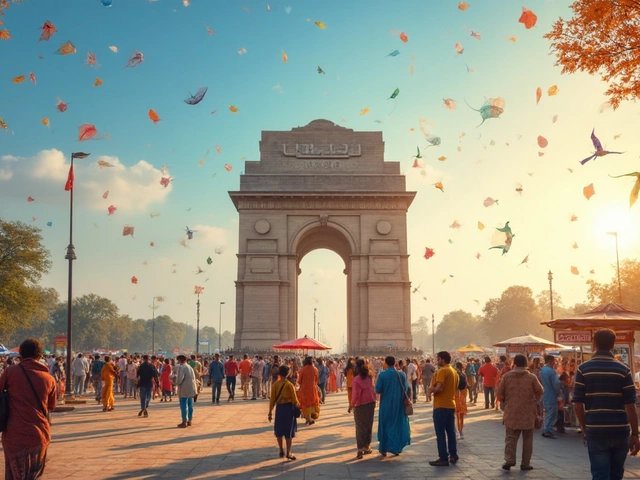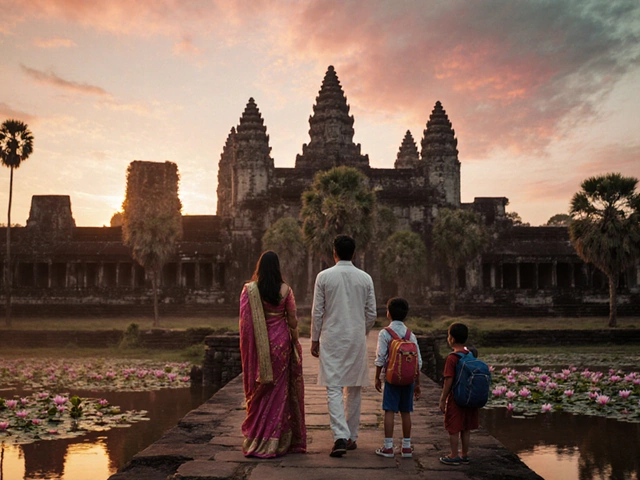Backpacking vs Hiking Gear Calculator
Choose Your Adventure Type
Select Trip Duration
Key Takeaways
- Backpacking involves multi‑day trips with a loaded pack; hiking is usually a day‑long walk.
- Gear weight, accommodation and planning depth differ significantly.
- Both activities share core skills like navigation and LeaveNoTrace principles.
- Choose based on your time, fitness, and comfort with carrying gear.
- Switching between them is easy once you know the basics of each.
When people talk about outdoor adventures, Backpacking is a multi‑day trek where you carry everything you need to live outdoors - shelter, food, water, and clothing - in a single backpack. It’s the ultimate test of self‑reliance, often spanning several nights in backcountry camps. Hiking, on the other hand, usually refers to a shorter, single‑day walk on a trail, where you return to a base or a vehicle at the end of the day. Both sound similar, but the details matter if you’re planning your next adventure.
What Exactly Is Backpacking?
Backpacking is a blend of hiking, camping, and logistics. Here are the core attributes:
- Duration: 2days to several weeks.
- Load: 15‑35lb (7‑16kg) of gear, depending on climate and distance.
- Accommodation: Tents, hammocks, bivy sacks, or shelters placed in designated backcountry spots.
- Planning: Route maps, permits, resupply points, and emergency exits.
- Fitness: Requires endurance to carry weight over long distances.
Typical gear includes a durable backpack (30‑70L capacity), a lightweight sleeping bag, stove, water filtration system, and a compact shelter. Because you’re living out of your pack, every ounce counts.
What Exactly Is Hiking?
Hiking is the act of walking on trails for recreation, fitness, or sightseeing. Its main features are:
- Duration: A few hours to a full day.
- Load: Usually a daypack (5‑15lb / 2‑7kg) with water, snacks, and a light jacket.
- Accommodation: You return to a starting point, a vehicle, or a nearby lodge.
- Planning: Trailhead information, weather check, and basic navigation.
- Fitness: Can range from easy strolls to strenuous ascents, but weight‑carrying is minimal.
Hiking gear focuses on comfort and safety: sturdy boots, a hydration reservoir, trekking poles, and a map or GPS device.
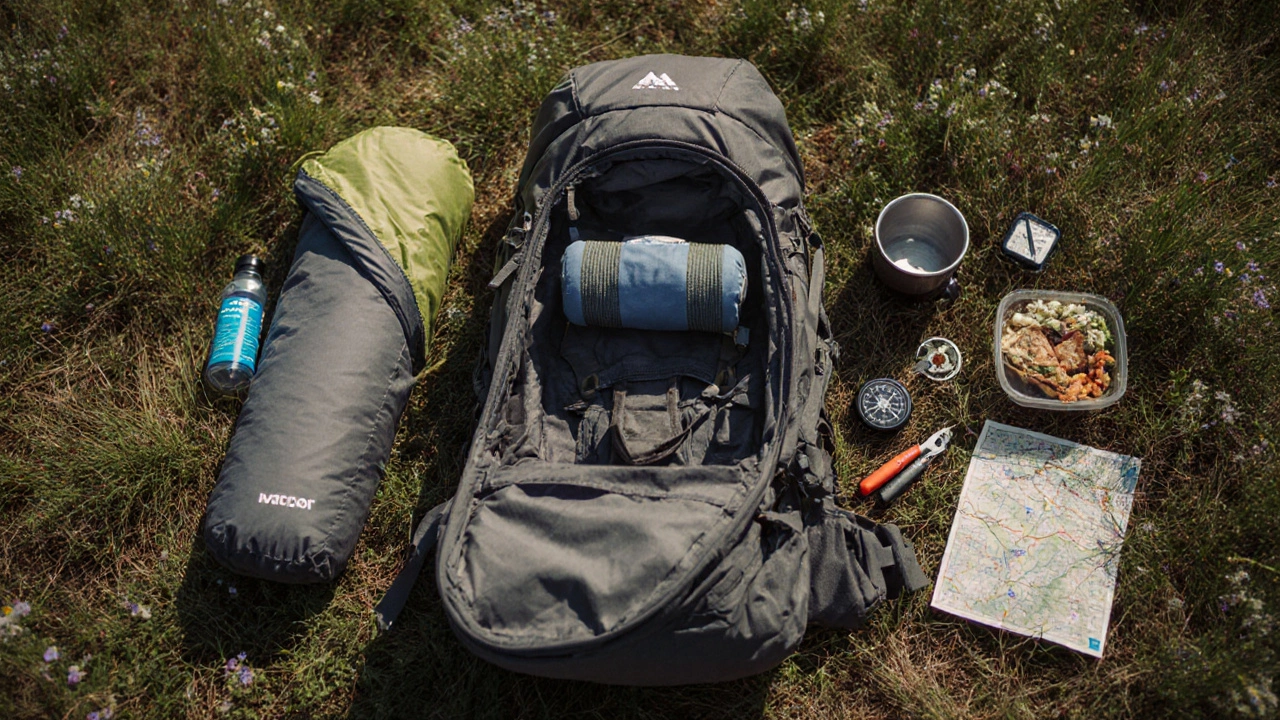
Side‑by‑Side Comparison
| Aspect | Backpacking | Hiking |
|---|---|---|
| Trip Length | Multiple nights | Same day |
| Gear Weight | 15‑35lb (7‑16kg) | 5‑15lb (2‑7kg) |
| Accommodation | Tent, hammock, bivy in wilderness | Return to home/vehicle or stay in lodge |
| Planning Depth | Permits, resupply, emergency routes | Trailhead info, weather, optional permits |
| Physical Demand | High - carrying load over long distances | Variable - can be easy or strenuous |
| Typical Skill Set | Navigation, campsite selection, gear maintenance | Trail following, basic first aid |
Where the Two Overlap
Despite the differences, backpacking and hiking share many core principles. Both require good navigation skills, a respect for Leave No Trace ethics, and appropriate footwear. You’ll find yourself using a trail map or GPS device on both, and you’ll need to judge weather conditions accurately. In fact, many hikers start with day hikes to build confidence before moving on to a short backpacking trip.
How to Choose the Right Activity for You
- Assess Your Time. If you have a weekend, a one‑ or two‑night backpack may fit. If you only have a Saturday, aim for a day hike.
- Check Your Fitness. Carrying 30lb for 8hours is a different workout than a 4‑hour hike with a light daypack.
- Consider Gear Investment. Backpacking gear costs more and takes up space. If you’re just testing the waters, start with hiking gear.
- Think About Logistics. Do you have a car to reach a trailhead? Are there resupply points on the route?
- Safety Comfort Level. Backpacking demands a solid emergency plan (e.g., satellite messenger). Day hikes are generally lower risk.
Answering these questions will point you toward the activity that feels right now, and you can always evolve later.
Gear Cheat‑Sheet: What to Pack for Each
Backpacking Essentials
- Backpack (30‑70L) with internal frame
- Lightweight tent or hammock system
- Sleeping bag (rated 20°F/‑6°C for most temperate zones)
- Sleeping pad (inflatable or foam)
- Stove, fuel canister, and lightweight cookware
- Water filter or purification tablets
- High‑calorie food (dehydrated meals, nuts, energy bars)
- Multi‑tool, headlamp, extra batteries
- First‑aid kit, map, compass, GPS unit
Hiking Essentials
- Daypack (15‑30L) with rain cover
- Sturdy hiking boots or trail shoes
- Hydration system (2‑3L water bladder)
- Snack foods (trail mix, fruit, jerky)
- Light jacket or raincoat
- Sun protection - hat, sunglasses, SPF
- Basic navigation tools - map and compass or phone GPS
- Compact first‑aid items (band‑aids, antiseptic wipes)
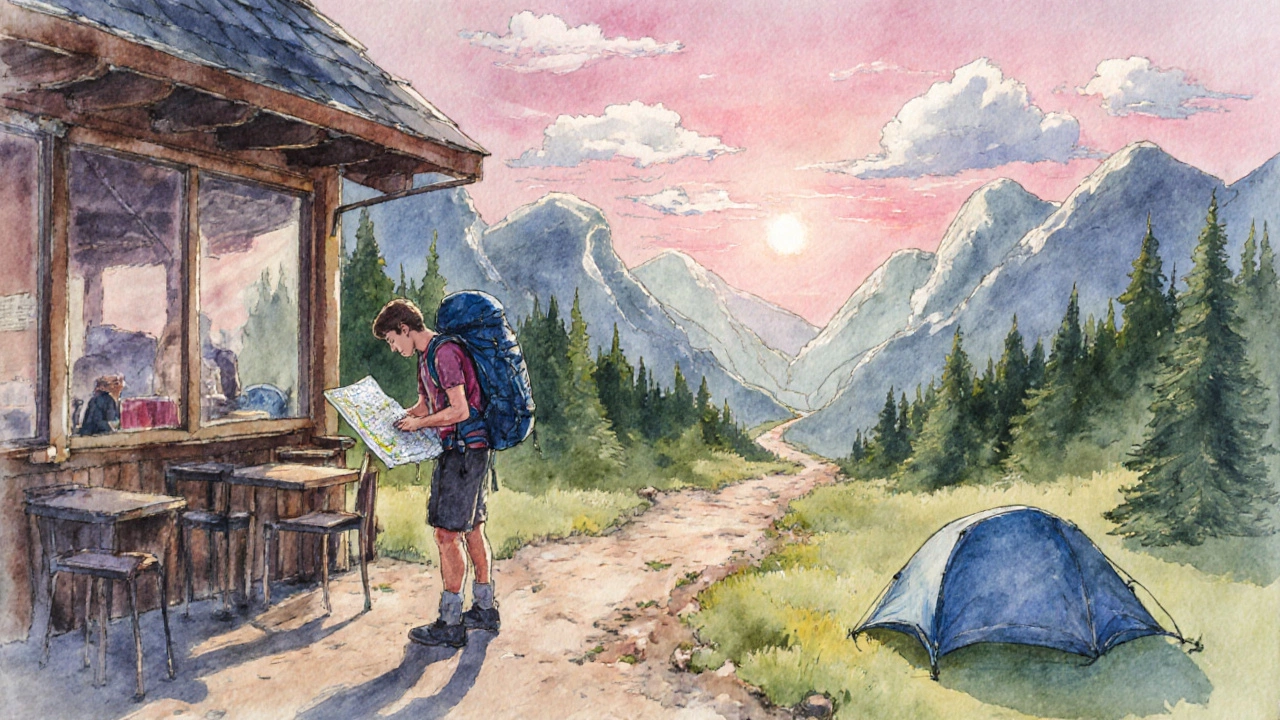
Planning and Safety Tips Common to Both
- Check the weather forecast 24hours before you leave.
- Tell a friend or family member your route and expected return time.
- Carry a device that can call for help - a satellite messenger, a personal locator beacon, or a fully‑charged phone with offline maps.
- Know the trail rating system (e.g., easy, moderate, hard) and match it to your ability.
- Practice setting up your shelter at home before you head out; muscle memory saves time in windy conditions.
Common Misconceptions
Myth 1: Backpacking is just hiking with a bigger pack. In reality, backpacking adds overnight logistics, food preparation, and campsite selection - a whole extra layer of planning.
Myth 2: You need to be a mountaineer to backpack. Many popular trails, like the Appalachian Trail’s “thru‑hike” sections, are designed for people with basic fitness and proper gear.
Myth 3: Hiking is always easy. Some day hikes involve steep ascents, technical footing, and rapid weather changes that can be as demanding as a short backpacking leg.
Putting It All Together
Whether you call it backpacking or hiking, the goal is to get outside and enjoy the trail. By understanding the core differences - trip length, gear load, accommodation, and planning depth - you can pick the right adventure for your schedule, budget, and fitness. Start small, learn the basics, and soon you’ll feel confident swapping daypacks for a full‑blown backpack on that canyon trek you’ve been eyeing.
Frequently Asked Questions
Do I need a permit for backpacking?
Many popular backcountry areas require a permit to limit impact and manage campsite usage. Check the managing agency’s website - National Parks, Forest Service, or state parks - well ahead of your trip. Day hikes often don’t need permits, but high‑traffic trails may have quotas.
Can I use the same shoes for both activities?
A sturdy hiking boot works for day hikes and light backpacking, but for longer trips with heavier loads you’ll benefit from a boot with extra ankle support and a sturdier sole to protect against sore feet.
How much food should I carry on a two‑night backpack?
Aim for 2,500-3,000kcal per person per day. For a two‑night (three‑day) trip, that’s roughly 7,500-9,000kcal. Choose lightweight, high‑energy foods like dehydrated meals, nuts, dried fruit, and energy bars.
What’s the minimum gear for a safe day hike?
At a minimum bring water (or a way to treat it), a map or GPS, a basic first‑aid kit, a rain jacket, a headlamp, and a fully charged phone. Add trekking poles if you have them for extra stability.
Is it okay to combine hiking and backpacking on the same trip?
Absolutely. Many trips start with a day hike to a basecamp and then transition into a multi‑day backpacking loop. Just adjust your pack weight and plan resupply points accordingly.
